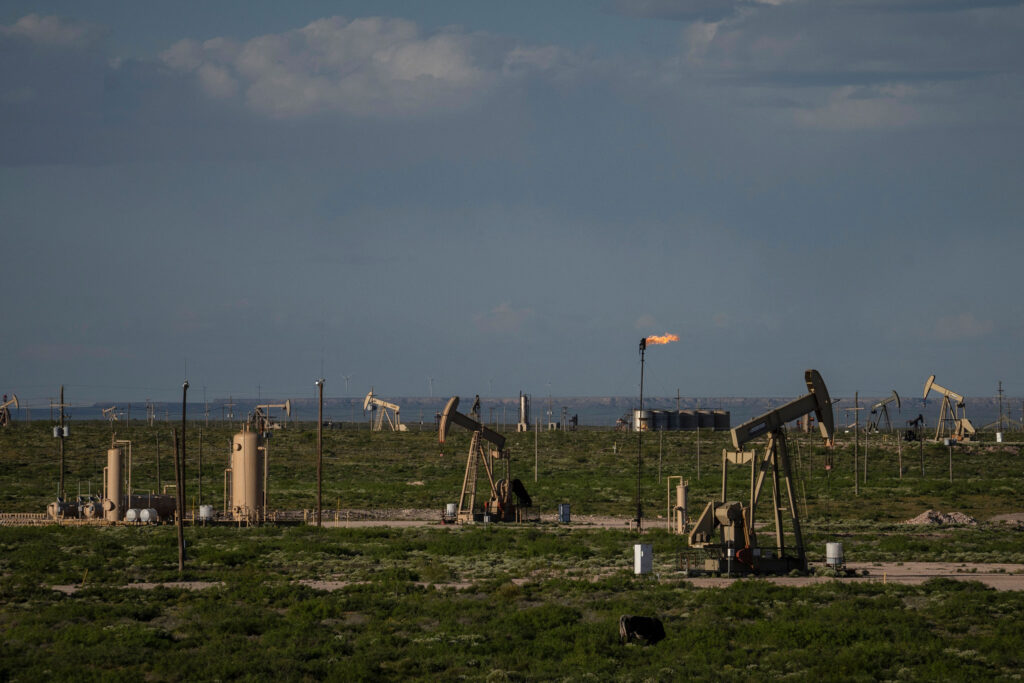The future of the colossal quantities of toxic wastewater generated by oil and gas drilling in New Mexico remains hotly contested. The stakes are high, as New Mexico produces hundreds of gallons of this waste annually, and the state is expected to deal with growing water shortages in the coming years. Despite the current practice of injecting this wastewater, referred to as ‘produced water’, underground, increasing evidence links this method to seismic activity.
The search for a sustainable disposal method is ongoing. While some of the produced water is recycled for oil drilling, there is no consensus on what else should be done with it. The water’s high salinity and potential contamination with hazardous compounds such as fracking chemicals, arsenic and certain organic compounds, makes it a significant environmental concern. The potential repercussions of reusing treated produced water were discussed at a public hearing last month.
New Mexico regulators have proposed a new rule that would allow the reuse of treated produced water outside of the oilfields for industrial processes, barring its discharge into other bodies of water. This rule has drawn criticism from all sides. The New Mexico Environmental Department (NMED) is unable to confirm the safety of discharging treated produced water, creating concern among oil and gas industry advocates that the rule may drive companies away from New Mexico. Environmental advocates, on the other hand, oppose the industrial use of this water.
In contrast, the Texas Commission on Environmental Quality began permitting produced water discharges across the state last year. Colorado and Wyoming have similar policies. However, in dry New Mexico, regulators are not convinced about the safety of these discharges.
After five days of testimony from environmental organizations and the oil and gas industry, the hearing had still not concluded. NMED expects to adopt the final rule by late 2024 or early 2025. As it stands, New Mexico, trailing only Texas in crude oil production, is faced with the burden of handling billions of barrels of produced water from drilling. The state’s Delaware Basin alone generated two billion barrels of produced water in 2022, according to NMED.
As New Mexico grapples with this waste, the state’s officials are sounding the alarm that an expansion and diversification of its water supply is urgently needed. The state water plan predicts that within the next 50 years, the state could face a shortage of 750,000 acre feet of water, equivalent to over 244 billion gallons.
Consequently, Governor Michelle Lujan Grisham has proposed a Strategic Water Supply that would purchase treated brackish water from wells and treated produced water from oil and gas drilling. These would then be made available for green hydrogen and manufacturing.
The proposed NMED rule would allow treated produced water to be used in industrial processes such as hydrogen production, chemical manufacturing or power plant cooling. However, NMED experts argue against discharging treated produced water into surface water due to insufficient data on water quality and treatment processes. A 2020 paper supports this viewpoint, stating that many substances in produced water lack the standard analytical methods or toxicity data needed to develop science-based regulatory standards.
Scientific research on produced water and the New Mexico Produced Water Consortium pilot projects underwent intense scrutiny at the hearings. The limited data available from these pilot projects and the additional lack of data characterizing the constituents in produced water were highlighted by NMED. The agency also noted that the treatment process for produced water would need to be highly specific and site-dependent due to the varying quality, constituents, and concentrations of produced water from different locations.
While some parties advocate for the urgency of treating produced water for use outside the oilfields, New Mexico regulators are taking the slower route of a meticulous rule-making process. By next year, the state will solidify its official stance on how to handle this vast volume of produced water.
Original Story at insideclimatenews.org
